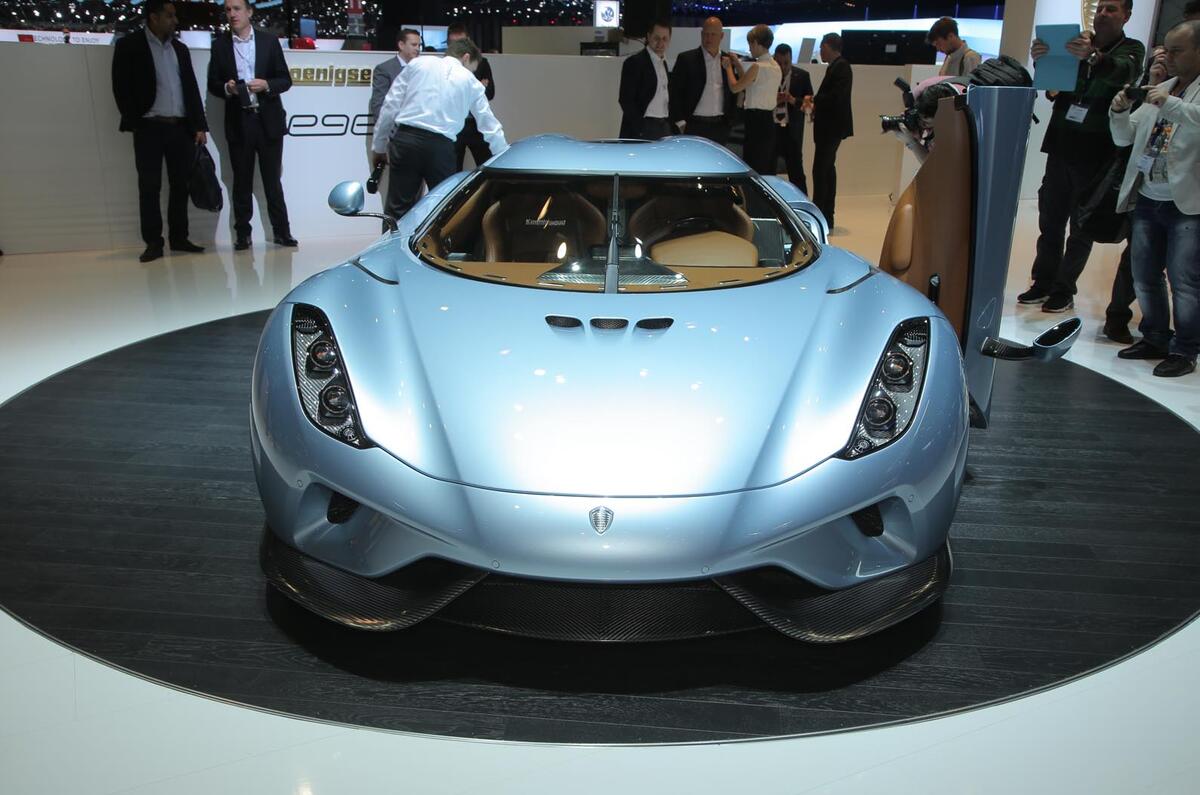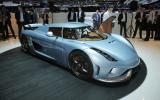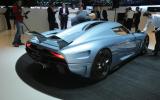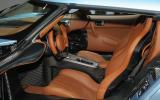Koenigsegg has revealed its new Regera hybrid hypercar at the Geneva motor show.
The first hybrid created by Koenigsegg is powered by the combination of a V8 engine and three electric motors – one on each rear wheel and one on the crankshaft.
Read all about the production-ready version of the Regera
The Regera features a softer front-end design than the Agera and comes with large front air intakes, a front diffuser, a wrap-around windscreen and a prominent roof scoop. At the rear, the new model gets an Akrapovic-developed exhaust which exits from a rear diffuser, above which is the Regera’s charging port.
Updated: Koenigsegg pull the covers off the production-ready 1479bhp Regara at the Geneva Motorshow
The Regera’s large rear spoiler contributes to a total downforce of 450kg at 155mph. The model sits on carbonfibre wheels – 19in at the front and 20in at the rear – and features ventilated ceramic brake discs at all four corners.
Output from the Regera’s 5.0-litre twin-turbocharged V8 engine is 1085bhp at 7800rpm. However, the added 697bhp coming from the electric motors produces a total system output of 1782bhp and combined torque of 1549lb ft.
Koenigsegg says the Regera is the most powerful production car in existence, with its outputs significantly eclipsing the likes of the McLaren P1, LaFerrari and Porsche 918 Spyder.
According to the car maker, it will cover 0-250mph in under 20sec, 95-155mph in 3.2sec and 0-62mph in around 2.8sec. It has also revealed that the Regera will run up to 20mph on electric power only.
The key to its performance is its relatively lightweight hybrid set-up. Although the Regera is not referred to as a traditional hybrid, the model does feature a new Koenigsegg Direct Drive (KDD) transmission which, the company says, can reduce energy losses by up to 50% compared with traditional transmissions and CVTs.
Despite the huge power output of the Regera, Andreas Petre, Koenigsegg’s director of sales in Asia, Middle East, Africa and Oceana, said it wouldn’t be difficult to drive on the road: “It has very sophisticated ESP, traction control, active chassis and aerodynamics. It’s like a very fast Tesla with a beautiful sound."
Just 80 examples of the Regera will be made over the next five to six years, and each will cost $1.89 million (around £1.23m) before tax.















































Join the debate
Add your comment
Compund and contact patch
It is possible in years to come that tyres, made with smart materials, may be able to adjust their width, pattern, and possibly even compound to suit various road conditions.
There is no physical limit to
meh